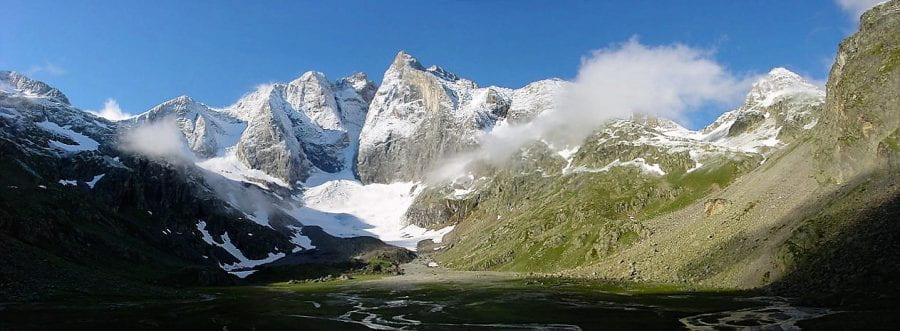Owing to a close contact with the upper circulation of the atmosphere, Earth’s alpine and polar regions (the cryosphere) are critical regulators of the planetary climate and are freshwater reserves of great quality.
Mountains are also a global nutrient store. In actively uplifting topography, a larger supply of fresh rock in contact with rainwater compared to the average landscape triggers a comparatively greater nutrient release and exponentially increased CO2 drawdown from the atmosphere. The mountains are therefore among the most bio-reactive terrestrial substrates and they are critical in initiating element cycles.
High solar radiation and low values in atmospheric pressure, temperature, and water availability also make the cryosphere a remarkable environment to study biosphere and its life-support system at their limits, and an analog to Mars.
My work focuses on the evolution of alpine lakes ecosystems in strong connection with surrounding landscape elements and the general climate. Topics such as deciphering the multiscale structure of ecosystem physical template, providing a quantitative estimate of the role of different landscape features in ecosystem composition, and the effect of recent climate change on weathering and mobilization of trace metals from naturally-rich repositories are part of my research, which I have tested on about 400 alpine lakes in the central Pyrenees.
In my curiosity to understand the limits of life in the cryosphere, I also partner with athlete explorers (through Adventure Scientists organization) in a global citizen science effort, which allows me to expand the sampling range and incorporate other “hotspots” around the globe. These included Mt. Denali in Alaska, Weisshorn in Europe, Kilimanjaro in Africa, Pamir in Asia, Aconcagua in S. America, Franz Joseph islands in the Arctic and Dry Valleys in Antarctica.

